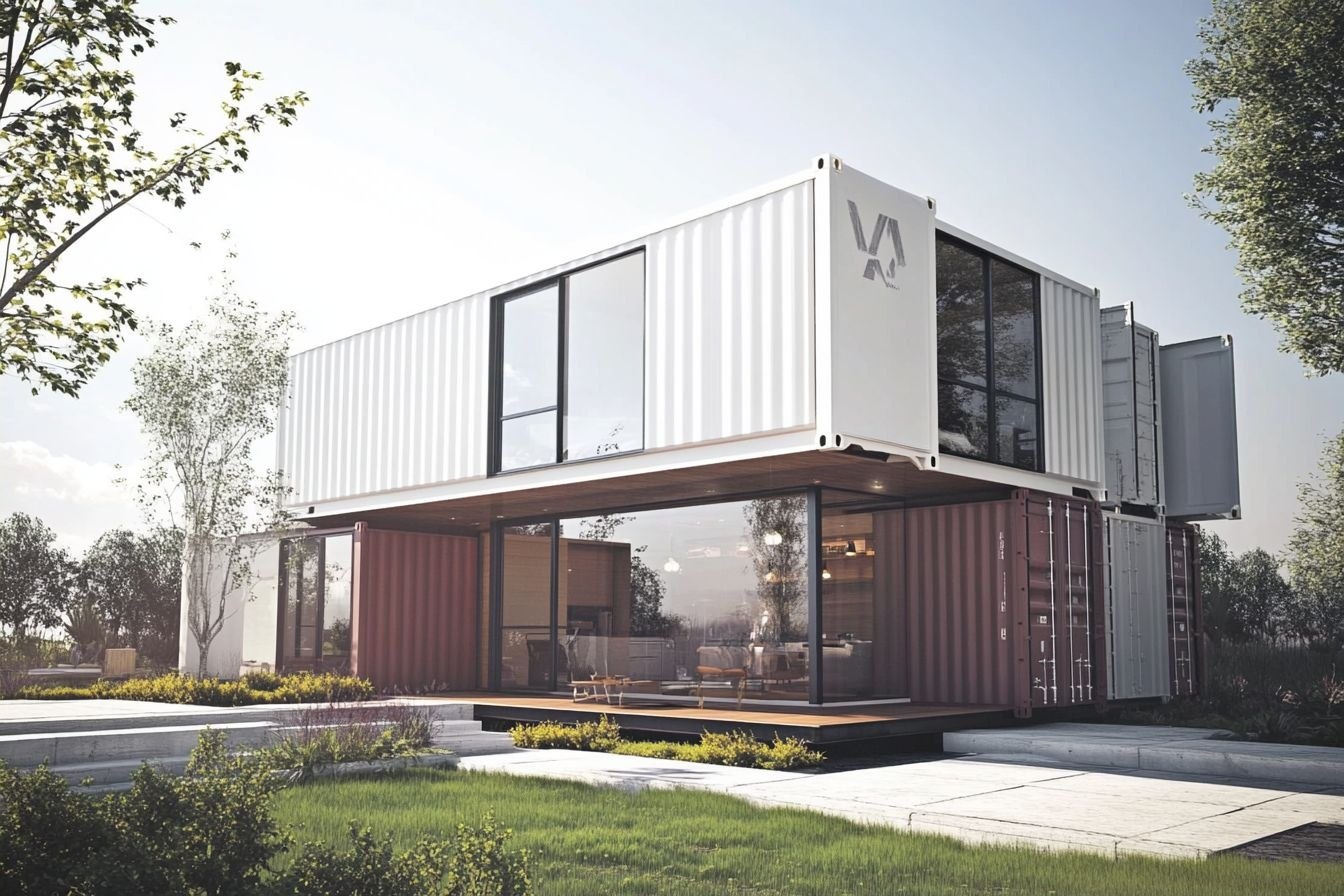Shipping Container Homes: Affordable, Sustainable, and Stylish Living
Shipping container homes are revolutionizing modern housing. Built from durable steel containers, they offer an affordable, eco-friendly, and customizable alternative to traditional homes. Whether you're looking for a compact studio, a weekend getaway, or a full-size residence, container homes can be designed to suit your lifestyle and budget. With fast construction times, minimal land impact, and sleek industrial aesthetics, it's no wonder more people are turning to container living. Discover how these unique structures combine sustainability, style, and smart design for the ultimate modern home solution.

What Are Shipping Container Homes?
Shipping container homes are residential structures built partially or entirely from decommissioned shipping containers. These steel boxes—typically measuring 20 or 40 feet long, 8 feet wide, and 8.5 feet tall—provide a ready-made structural frame that can be modified into living spaces. The transformation process involves cutting openings for doors, windows, and interior connections; adding insulation; installing utilities; and finishing the interior and exterior to create a comfortable, functional home.
The concept emerged in the early 2000s as architects and environmentally conscious homeowners began exploring alternative building methods. Today, container homes range from simple, single-container tiny homes to elaborate multi-container mansions featuring multiple stories and luxury amenities. Their industrial aesthetic can be embraced for a modern look or disguised with conventional siding and finishes to blend with traditional neighborhoods.
Key Benefits of Container Homes
Shipping container homes offer several compelling advantages over conventional construction methods. First and foremost is their affordability. The base structure—a used shipping container—can be purchased for $1,500-$5,000, providing an instant structural shell that would cost significantly more using traditional building materials. Even after modifications and finishing, container homes often cost 30-40% less than conventional construction.
Sustainability represents another major benefit. Repurposing containers prevents them from being melted down (an energy-intensive process) or abandoned in shipping yards. The homes have a smaller carbon footprint during construction and can be designed for energy efficiency with proper insulation and window placement. Many container home owners incorporate additional eco-friendly features like solar panels, rainwater collection systems, and green roofs.
Speed of construction gives container homes another edge. While traditional homes take months to build, container structures can be completed in weeks since the main structure already exists. Much of the modification work can be done off-site in controlled conditions, with the finished or partially finished containers transported to the final location for assembly.
Finally, these homes offer remarkable durability. Shipping containers are built to withstand ocean transport, stacking, and extreme weather conditions. Their steel construction provides excellent resistance to fire, termites, and mold—issues that frequently plague traditional wood-framed homes.
Considerations Before Building a Container Home
Despite their advantages, container homes aren’t without challenges. Zoning and building code compliance can be significant hurdles in some areas. Many municipalities haven’t updated their regulations to specifically address container construction, which can complicate the permitting process. Prospective builders should research local regulations thoroughly and possibly consult with officials before purchasing land or materials.
Insulation represents another critical consideration. Steel conducts heat and cold efficiently—a disadvantage for housing. Without proper insulation, container homes can become uncomfortably hot in summer and cold in winter. Several insulation approaches exist, including spray foam, panel insulation, and blanket insulation, each with different cost and performance implications. The choice of insulation method significantly impacts both construction cost and long-term energy expenses.
Structural modifications require careful planning. While containers are engineered to bear weight at their corners, cutting openings for windows and doors reduces structural integrity. Depending on the design, reinforcements may be necessary. Working with professionals familiar with container construction helps ensure that modifications don’t compromise the structure’s safety.
Real-World Cost Analysis of Container Homes
The total cost of a container home varies widely based on size, design complexity, finishing choices, and location. A basic single-container home with minimal amenities might cost $30,000-$40,000 fully finished. Mid-range designs using multiple containers typically range from $100,000-$175,000. High-end container homes with premium finishes and complex designs can exceed $200,000, though they still often cost less than comparable traditional homes.
| Type of Container Home | Size (approx.) | Average Cost Range | Construction Time |
|---|---|---|---|
| Basic Single Container | 160-320 sq ft | $30,000-$80,000 | 2-3 months |
| Medium Multi-Container | 600-1,200 sq ft | $100,000-$175,000 | 3-5 months |
| Luxury Container Home | 1,500+ sq ft | $175,000-$350,000+ | 5-9 months |
Prices, rates, or cost estimates mentioned in this article are based on the latest available information but may change over time. Independent research is advised before making financial decisions.
Beyond the containers themselves, budget considerations include foundation work ($5,000-$25,000), insulation ($2,000-$6,000 per container), interior finishing ($20,000-$50,000+), and utility connections ($5,000-$15,000). Labor costs vary significantly by location and whether you hire specialists or general contractors. Some container home owners reduce expenses through DIY work, though this requires substantial skills and time commitment.
Popular Container Home Builders and Designers
Several companies have established themselves as leaders in the container home industry. Honomobo, based in Canada but serving the U.S. market, offers prefabricated container homes ranging from small studios to multi-bedroom residences, with prices starting around $100,000. California-based Logical Homes specializes in sustainable container architecture with customizable designs for residential and commercial applications.
Other notable builders include Custom Container Living (Missouri), Alternative Living Spaces (Nevada), and Giant Containers (Toronto). Each brings different specialties and aesthetic approaches to container construction. Some focus on turnkey solutions, while others provide customization services for homeowners who want to participate more actively in the design process.
Conclusion
Shipping container homes represent an innovative approach to housing that balances affordability, sustainability, and personal expression. While not without challenges, these repurposed structures offer unique opportunities to create distinctive living spaces with reduced environmental impact and construction costs. As building techniques evolve and more jurisdictions adapt their codes to accommodate alternative construction methods, container homes seem poised to become an increasingly mainstream housing option rather than just an architectural curiosity.



